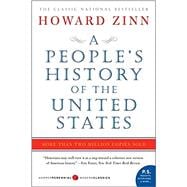Known for its lively, clear prose as well as its scholarly research, A People's History of the United States is the only volume to tell America's story from the point of view of -- and in the words of -- America's women, factory workers, African-Americans, Native Americans, working poor, and immigrant laborers.
This P.S. edition features an extra 16 pages of insights into the book, including author interviews, recommended reading, and more.








